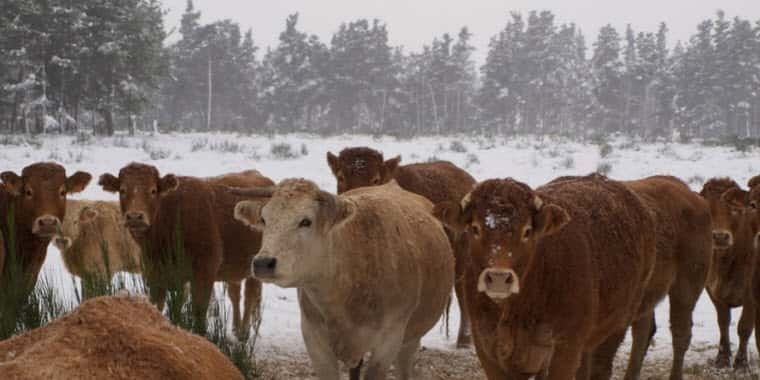Routine brucellosis surveillance testing has identified brucellosis affected cattle herds in both Park and Sublette Counties. Laboratory testing was conducted at the Wyoming State Veterinary Laboratory (WSVL), Laramie, and results were confirmed at the National Veterinary Services Laboratory, Ames, Iowa. Both herds are located within Wyoming’s Brucellosis Designated Surveillance Area (DSA). With the addition of these herds, WLSB currently has three herds in Park and one herd in Sublette County under quarantine for brucellosis.
Both affected herds have been quarantined following confirmation of test results. No contact herd quarantines are anticipated. The affected herds are currently participating in serial testing to meet the requirements for quarantine release. Testing of affected herds is a cooperative effort between herd owners, private veterinary practitioners, Wyoming Livestock Board (WLSB) personnel, and United States Department of Agriculture (USDA), Animal and Plant Health Inspection Service (APHIS), Veterinary Services (VS) personnel.
Identification of brucellosis positive cattle is not uncommon within Wyoming’s DSA, where a brucellosis reservoir in wildlife occasionally spills over into cattle. Required brucellosis surveillance for specified cattle in the DSA includes testing prior to leaving the DSA, and within 30 days prior to change of ownership.
Dr. Teckla Webb, WLSB Assistant State Veterinarian – Field Operations, acknowledges the difficult situation faced by owners of affected herds. “We sincerely appreciate the cooperation from producers and veterinarians within the DSA,” says Dr. Webb. “All affected herds are required to use electronic identification device (EID) eartags, and all data is submitted electronically, ensuring accuracy and efficiency for disease reporting. The majority of our DSA veterinarians have been using EID tags for almost a decade when performing brucellosis official calfhood vaccinations and routine brucellosis surveillance testing, which has significantly enhanced the accuracy and traceability of our brucellosis data.”
Dr. Webb extends her thank you to all Wyoming’s DSA cattle producers and veterinarians. “The tireless attention to brucellosis mitigation and testing is vital to maintaining Wyoming’s brucellosis free state status,” explains Dr. Webb. “The added cooperation of the Wyoming Game and Fish Department and WSVL in brucellosis surveillance and diagnostics significantly enhances our mitigation program when presenting data to states receiving Wyoming cattle.
Wyoming’s comprehensive brucellosis mitigation program includes testing and vaccination for brucellosis. In the state of Wyoming, sexually intact heifers must be vaccinated for brucellosis by one year of age. In addition, heifers residing in Wyoming’s DSA that are brucellosis vaccine eligible (4 months of age or older) must be brucellosis vaccinated by February 1 each year.
For further information, please contact the Wyoming Livestock Board, 307.777.7515, email lsbbrucellosis-mitigation@wyo.gov.
###
WLSB


